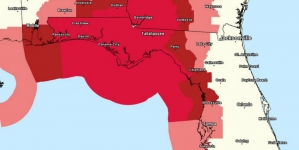-
Tips for becoming a good boxer - November 6, 2020
-
7 expert tips for making your hens night a memorable one - November 6, 2020
-
5 reasons to host your Christmas party on a cruise boat - November 6, 2020
-
What to do when you’re charged with a crime - November 6, 2020
-
Should you get one or multiple dogs? Here’s all you need to know - November 3, 2020
-
A Guide: How to Build Your Very Own Magic Mirror - February 14, 2019
-
Our Top Inspirational Baseball Stars - November 24, 2018
-
Five Tech Tools That Will Help You Turn Your Blog into a Business - November 24, 2018
-
How to Indulge on Vacation without Expanding Your Waist - November 9, 2018
-
5 Strategies for Businesses to Appeal to Today’s Increasingly Mobile-Crazed Customers - November 9, 2018
How massive volcanoes gave Mars a makeover
New research has revealed that billions of years ago, so much lava was spewed by Martian volcanoes that the planet’s surface was radically changed to what we see today.
Advertisement
The rotation axis of Mars did not shift, but the external layers, the mantle and crust, turned with respect to the internal core.
The tilt itself was actually caused by the very big Tharsis volcanic dome, which first started to form more than 3.7 billion years ago at a latitude of around 20 degrees North. This dome is the largest in the solar system, and its volcanic activity continued for several hundred million years, forming a plateau exceeding 5,000 km in diameter.
The study also challenges the notion that the rivers formed after the Tharsis dome, as the authors concluded that most of these waterways would have flowed from south to north whether the lava fields were there or not.
“This study upsets our picture of the surface of Mars as it must have been 4 billion years ago, and modifies the timing of events profoundly”, write the scientists in their announcement.
The massive geological event also happened much more recently than previously thought, changing our understanding of the development of the planet.
The Tharsis region (shown in shades of red and brown) dominates the western hemisphere of Mars.
Bouley: “Scientists couldn’t figure out why the [dried up] rivers were where they are”.
Refence: Late Tharsis formation and implications for early Mars, Sylvain Bouley, David Baratoux, Isamu Matsuyama, Francois Forget, Antoine Sjourn, Martin Turbet & Francois Costard. Rain, ice and snow would have been commonplace during this time, they said. The scientists believe the period of liquid water stability that helped make the formation of river valleys possible was a result of the volcanic activity at the Tharsis dome.
They plotted the shape of the planet and its surface topography before the bulge of the volcano had any impact, when its spin was controlled by the difference in the elevation between the northern hemisphere and the southern.
“We show that the observed directions of valley networks are also consistent with topographic gradients in this configuration and thus do not require the presence of the Tharsis load”, the paper says.
That places the Tharsis region, the largest volcanic area on Mars, estimated to be 2,500 miles across and six miles high, near the Martian equator.
Mars didn’t always have the same face.
This means that Tharsis is younger than what was thought before.
Advertisement
All this information holds a lot of information because scientists, who carried out the research at the Universite Paris-Sud in Paris, think that this changes the way they look at the planet in its first billion years, the time when there might have been life on Mars. Did it contribute to the disappearance of Mars’ atmosphere, or cause the rivers to stop flowing?




























